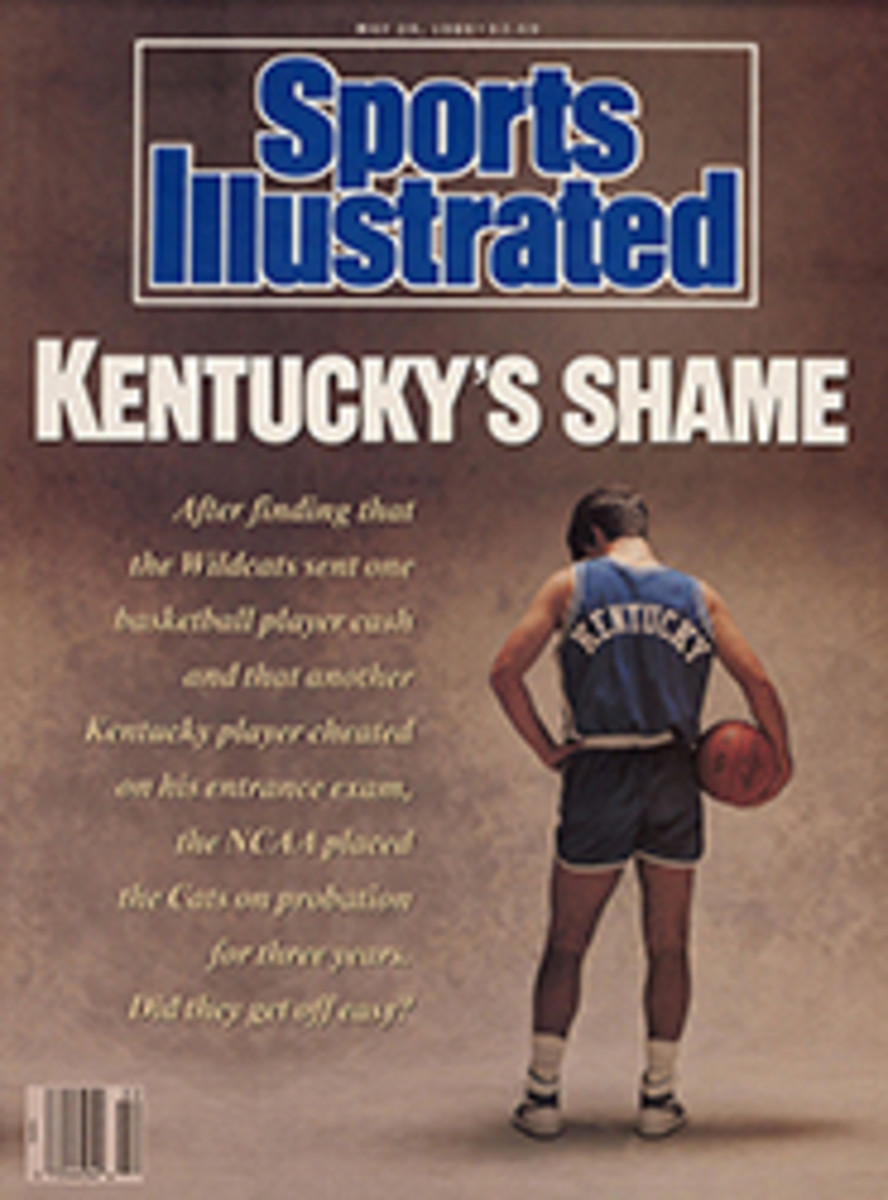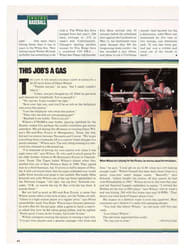
FISHING FOR TROUT THE FRENCH WAY
There is trout fishing with a fly rod, and there is trout fishing with a spinning rod. Then there is trout fishing the French way, which is a more effective means of taking fish than anything other than a depth charge.
In the U.S. only one stream is regularly fished the French way—the Esopus Creek in the Catskill Mountains. The Catskills are within easy reach of New York City, and in this century myriad ethnic groups, including Jews, Ukrainians, Irish, Italians, and Armenians, have established enclaves. The French connection began in the early 1950s, when Edouard LaBeille, a former fireman in Paris who was working as a waiter at Le Pavilion, the first great postwar French restaurant in Manhattan, started vacationing in the Esopus valley. In 1954 LaBeille, a hunter and fisherman, bought an old boardinghouse in Shandaken, added a restaurant and renamed the place L'Auberge des Quatre Saisons (The Inn of the Four Seasons).
As word of the Auberge and the surrounding area spread, "the Esopus valley became the rallying point for all the French in New York hoping to find countryside like Ariège or le Pays Basque" says Liliane Knab, who with her husband, Tim, bought the Auberge from LaBeille in 1984. The trout fishing in the Esopus is the big draw for many French—and rightly so, because it is one of the finest trout streams in the East.
There is said to be one elderly Frenchman in the area who fishes with artificial flies. Everyone else uses salmon eggs or worms. I found this out one recent Saturday night when I had dinner at the Auberge. Long intrigued by stories I'd heard about the French way of trout fishing, I wanted to see how it was done. An acquaintance, who spent his boyhood in the Catskills and fly-fishes the Esopus, recommended that I get in touch with the Knabs. I called the Auberge to make a dinner reservation and told Madame Knab of my interest in French trout-fishing techniques. She said she had just the man for me: Emile Melin, the Auberge's maitre d' and jack of all trades.
Emile was my waiter, and during dinner I talked to him and Madame Knab. "I am a specialist in worms," said Emile. Asked how he did, he bustled off to the kitchen and returned with a tray containing two rainbow trout frozen in a block of ice. " Voilà," he said. One weighed three pounds, the other two.
Now 36, Emile started fishing as a boy in Vichy. Seven years ago he took a job as a maître d' in Manhattan. Lured by the trout in the Esopus, he started working weekends at the Auberge in 1985, and in November 1987 he decided to work full-time at the inn. During my dinner at the Auberge, Emile agreed to let me watch him fish the Esopus. So two days later, at 9 a.m., I returned to the inn. He put his gear in the trunk of my car, and we drove to a bait shop to buy worms. Under a blazing sun, we parked by the Esopus next to the bridge leading to Woodland Valley.
Emile put on hip boots and took out what appeared to be a two-foot fiberglass rod. Pulling on one end, he kept untelescoping the rod until it reached the remarkable length of 15 feet. A tiny reel, its diameter no larger than a silver dollar, sat on the underside of the butt. The reel contained only 35 feet of 10-pound-test monofilament line. "What happens when a fish runs?" I asked.
"No, they don't run anywhere," Emile said. Tied to the end of the line, just below two split-shot, was a snelled six-inch leader with a size-8 bait hook.
I watched from the bridge while Emile went down to the creek and threaded a worm on the hook. Holding the rod in his right hand and fingering the line near the reel in his left, he gently swung the rod and cast 20 feet upstream into a strong flow of water. As the current carried the bottom-bouncing worm downstream, he followed it with the rod held straight out at arm's length. In four casts he covered the water. Nothing.
He strode two feet out into the creek, climbed on a rock and cast the worm downstream into a pocket behind another rock. A trout struck. He swung it ashore, rapped it on the head with a stone and placed the 10-inch brown in his creel. Emile rebaited the hook, rinsed his hands in the creek and resumed fishing. He cast twice, but when no trout struck, he climbed onto the bridge and crossed to the other side of the Esopus.
Emile instantly caught a second trout, a 12-inch rainbow. Two casts later, he swung ashore a third, a seven-inch brown. He released it because, as he explained later, it was too small to sautè in a pan with the 10- to 12-inch fish he hoped to bring back to the Auberge. The long rod allowed Emile to put the worm wherever he wanted without spooking the fish, and within 30 minutes he had the six trout he wanted for lunch.
Back at the Auberge, Tim Knab sautèed the trout. An American, he is an enthusiast of French and Mexican food. He also has a Ph.D. in anthropology, knows three Aztecan languages and was doing research in Mexico when he met Liliane, a former demographer with the UN, who grew up in Nice, France. Tim shares the cooking with Alain Raybaud, a former history teacher from Nice and the author of a cookbook entitled La Cuisine Vagabonde.
The Auberge is closed for lunch, but for the staff the meal is a daily feast. The day I sat in, Tim and Alain served, besides the fish, platters of sliced tomatoes and onions and a huge bowl of a salad known as a mesclun. We also had loaves of bread and two jugs of French wine, one red, the other white. As the Michelin Guide might say, the Esopus Valley is worth not just a detour but a trip.
The Auberge's phone number is 914-688-2223.
PHOTO
LANE STEWART
As one might expect, at the Auberge sautèed trout is a house specialty.
PHOTO
LANE STEWART
When Emile gets out the worms and his 15-foot pole, Esopus trout don't have a chance.

